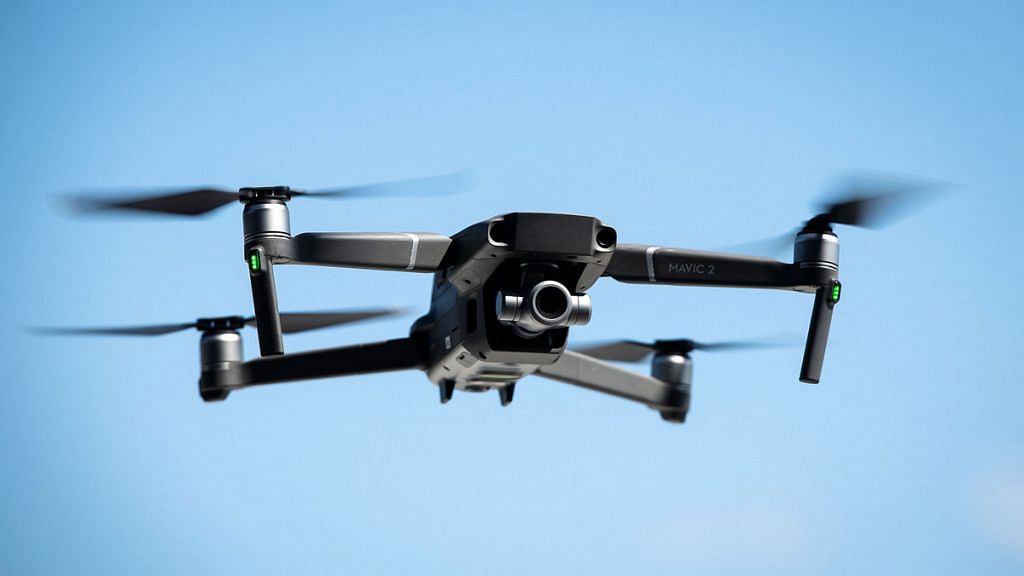India formally entered the drone ecosystem in 2018. By 2021, the country’s UAV market is expected to be worth $885.7 million out of the world’s $21.47 billion.
In 2019, the number of aerial images taken from drones is expected to cross 100 million. Over 30 million acres of land will be mapped using drones for an array of industrial purposes. Drones, which were born and earned distinction on the battlefield, are now gradually finding their way into the civilian airspace.
Over the past decade, the United States and China took highly measured steps to mainstream drone technology, resulting in a healthy infusion of capital into the industry. India has also begun treading prudently in the sector, announcing its formal entry into the fray in 2018, which was a historic moment for the industry at large.
The rapid adoption of UAV technology would entail the release of a comprehensive and futuristic regulatory framework in India.
How drone tech can help India
By 2021, the UAV market in India is expected to be around $885.7 million, while the global market is estimated to touch $21.47 billion. Sectors such as agriculture, infrastructure, mining, law enforcement and entertainment, among others, have witnessed a surge in the adoption of UAVs.
The Smart Cities Mission launched by the government of India involves area-based retrofitting and renewal of cities to make them more liveable, and has sought the widespread engagement of 4th generation technologies such as drones, Internet of Things and Blockchain. This is essentially to help solve problems such as traffic, sanitation and security that have riddled urban India for decades.
For instance, the government of Rajasthan procured batches of quadcopter to bolster its existing security detail. The incumbent set up involved CCTV cameras, wearable devices and traditional equipment to identify crime. The integration of drones would help the police tackle the law and order situation more efficiently, given the agility of drone technology.
In the field of agriculture, issues ailing Indian farmers include weak supply chain, market information and price realisation. The government’s objective of doubling farmer income by 2022 has seen a parallel embracement of drone technology to realise this goal.
Andhra Pradesh, one of the early adopters of technology (and the torch bearer of India’s rise as an IT hub), engaged drones to enhance output. A recent project in Gogulampadu, Krishna district, involved the use of drones to count the number of germinated corn seedlings across the farms with the basic purpose of increasing overall productivity of the cluster. With an accuracy of over 90 per cent, the sample tests were a success, and a testament to the benefits of UAV technology in India.
Precision farming techniques, including geographic information system (GIS) and drones, have increased the global supply of rice, wheat and maize by 79-96 per cent. Without these methods, an additional 446 million hectares would have been required for crop production.
According to a report by McKinsey Global Institute, titled ‘India’s technology opportunity: Transforming work, empowering people’, Tamil Nadu ran a precision farming project from 2004-2007. Using GIS-based soil and field-mapping techniques, 400 hectares were planted with variants of over 23 crops. The yields were estimated to be 60-80 per cent higher than conventional techniques.
Coupled with machine learning algorithms, large quantities of data can be digested and comprehended in quick time.
Also read: Apps, drones, online markets as Coffee Board looks to improve crop productivity
The policy question
In December 2018, the ‘Civil Aviation Requirements for Drones’ (or Drone Policy 1.0) was issued by the Directorate General of Civil Aviation. This was not an ordinary circular but a landmark policy paper as, for the first time, India would witness a futuristic regulatory framework around a highly futuristic, 4th generation technology.
‘Digital Sky’ would be the theme of India’s first UAV policy.
This would involve a seamless, paperless process for obtaining permissions to fly drones. With an exhaustive set of guidelines coupled with carefully crafted policy, the Ministry of Civil Aviation has gone all out to ensure that India’s skies are safe, yet accessible for productive purposes.
The No-Permission-No-Takeoff (NPNT) model ensures that all manufacturers and drone exponents adhere to the highest levels of safety. With a near-real time permission turnaround, this mechanism assimilates flight plans, correlates to data libraries and delivers a response (affirmative or negative). The Digital Sky portal is a one-touch system where drone manufacturers, operators, hobbyists and exponents can obtain their identification numbers and operator permits, and log flight paths and mission data easily.
As data sets build, back-end information would help enable decisions related to pilot practices, safety standards and air worthiness, among others.
Delving deeper, the ministry engaged stakeholders from across the board to ensure robust policy. Inputs were sought from manufacturers, start-ups, pilots, trade bodies and thought leaders, many of which were incorporated to keep the skies accessible yet secure.
While areas such as Beyond Visual Line of Sight and Packaged Deliveries are still a work-in-progress, India is positive that the next iteration of the drone regulations would not only be all-encompassing, but also a prototype for other countries aiming to futurise the skies.
Also read: The Bengaluru start-up that is building affordable model rockets you can buy
This piece was published in collaboration with World Economic Forum
